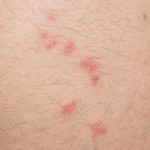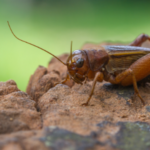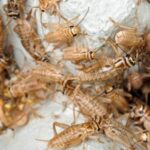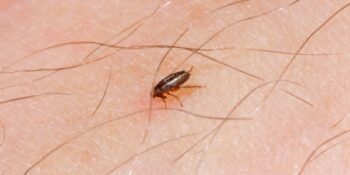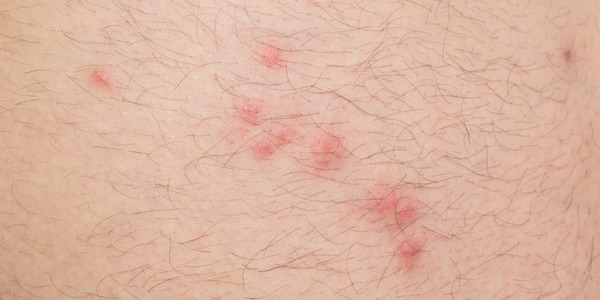
It’s that time of year when it’s likely you’ll end up with fleas, bed bugs, or worse—both—inside your Long Island home. If you find yourself or one of your family members with mysterious bites all of the sudden, here’s how to tell if you’re dealing with flea bites or bed bug bites.
All About Bed Bug Bites 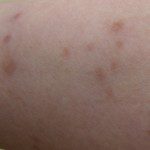
Bed bugs are small, brownish, hitchhiking insects that feed on the blood of humans and animals. They are about the size of an apple seed and nocturnal, meaning they come out at night to hunt for food. Bed bugs frequently get brought into Long Island homes on luggage after traveling or on clothing and/or shoes. Once inside, they’re experts at hiding in the cracks and crevices of your home, often in the bedroom. Though you’re unlikely to see them during the day, bed bugs are active at night and will crawl onto hosts to bite them while sleeping.
Bed bug bites can occur in almost any part of your body with exposed skin. However, they frequently appear in skin folds on the lower half of the body, along the face, neck, arms, and chest, and in warm areas like behind knees or under arms.
The bites themselves appear as small red bumps which are oval in shape. They usually appear in linear rows of 10 or more bites and have a darker red spot in the middle of the bite, along with raised skin in the affected area.
How to Treat Bed Bug Bites
To treat bed bug bites, start by washing the area with soap and water as soon as possible. This will reduce swelling and itching associated with bug bites by getting rid of any bacteria that is present. You can also apply cold compresses to reduce swelling if necessary, which will especially help if you or your family members have sensitive skin. If you experience an allergic reaction, keep in mind that antihistamines work well against a variety of pest bites. If you have reason for concern or the bites don’t go away, be sure to seek help from a medical doctor.
Flea Bites 101 
Fleas are tiny parasitic insects that also feed on the blood of humans and pets. They’re frequently, but not exclusively brought inside Long Island homes via our pets. Say your dog has an afternoon roll in the grass, picks up some fleas in the process, then comes back inside your home and lays on the couch, carpet, or your bed—now you could end up with a flea problem!
Flea bites, as opposed to the bed bug bites, typically show up in more randomly on the body instead of in rows; sometimes flea bites show up in groups of threes. Flea bites leave itchy red bumps on the body, which may turn into blisters, and most often, you’ll notice them on the upper half of the body along the neck, shoulders, back, and arms.
How to Treat Flea Bites
When fleas bite, they inject their saliva into your skin, which causes a reaction that creates a rash. The itching caused by many different types of insects can be treated with over-the-counter antihistamines and topical creams such as hydrocortisone or calamine lotion. If the flea bites don’t go away or you have reason for concern, contact your doctor.
Protect Your Home from Pests 24/7
To provide the best protection against bed bug bites and flea bites, Suburban Exterminating offers a comprehensive range of pest control services on Long Island.
If you think that you have a pest problem, contact us at (631/516) 864-6900 to schedule an inspection. We will come out and evaluate your home and determine what steps should be taken next to help your protect your family and pets from pests!

